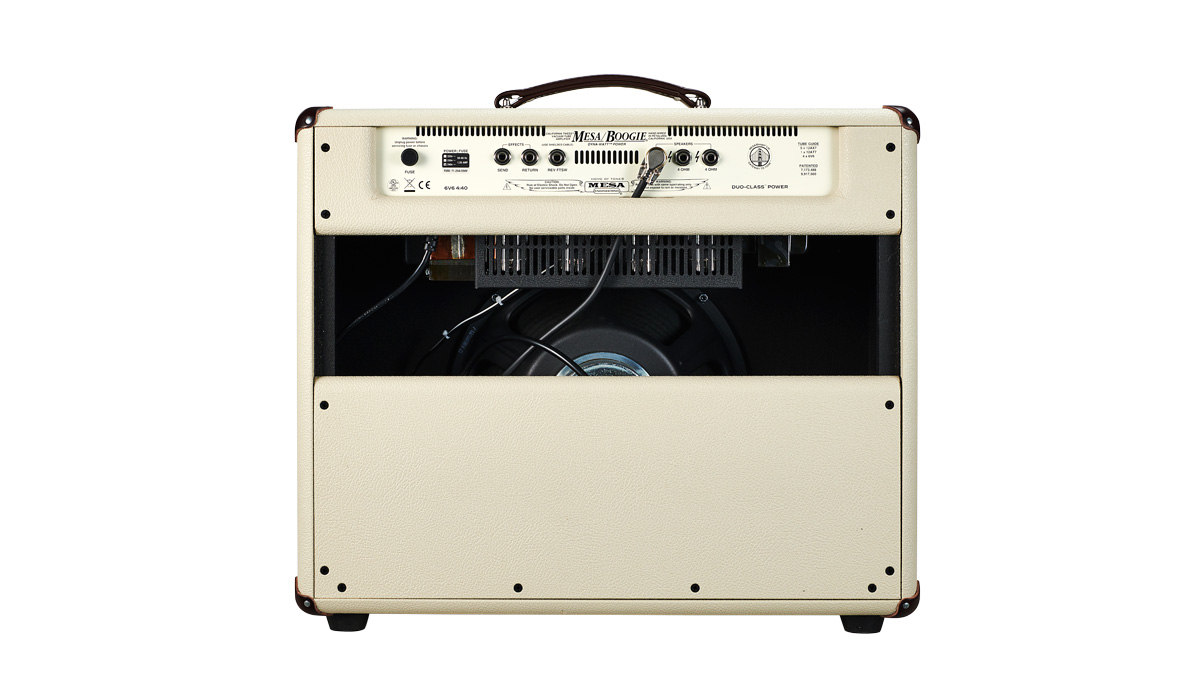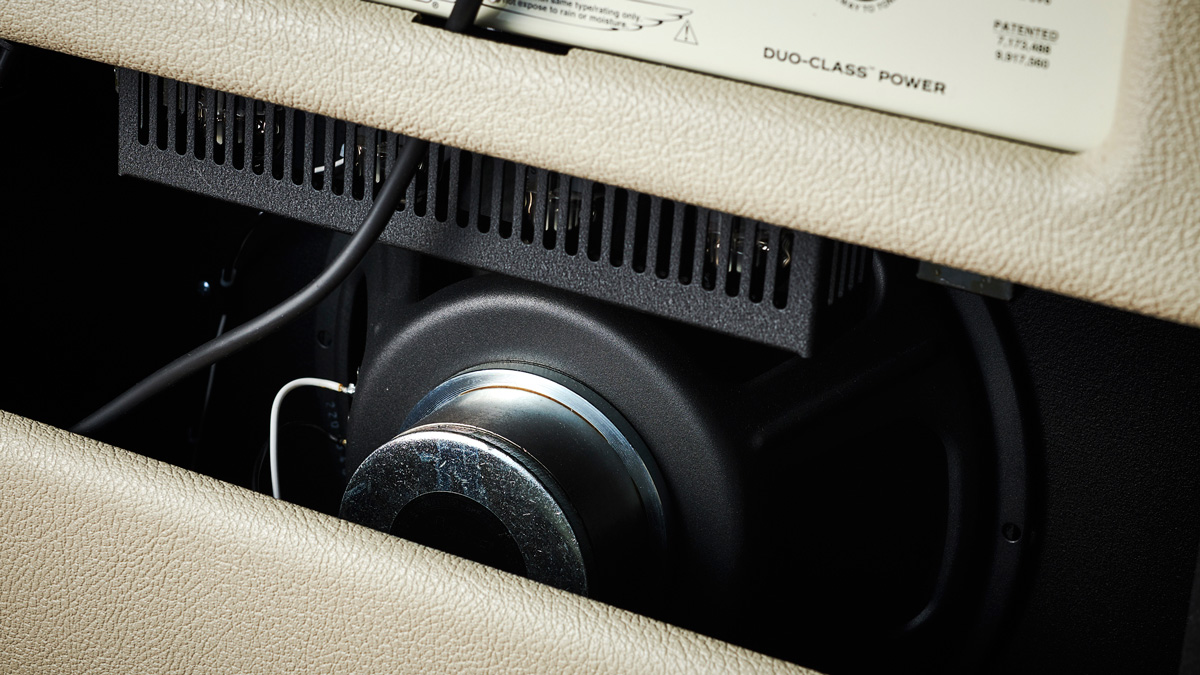MusicRadar Verdict
A masterful amp.
Pros
- +
Off-the-scale tone and response - a fitting 50th anniversary model from the original boutique amp builder.
Cons
- -
It’s expensive, though comparable to other high-end boutique brands.
- -
A footswitchable effects loop would have been great.
MusicRadar's got your back
This year marks the 50th birthday of the legendary Californian guitar amp builder Mesa Engineering, founded by amp hot-rodder Randall Smith, who profoundly influenced the electric guitar universe with a steady stream of game- changing innovations developed from the original cascaded gain Boogie amplifier series.
As if the Boogie wasn’t enough, Mesa precipitated another paradigm shift in the early 1990s with the creation of the Dual Rectifier, which quickly became the benchmark for modern rock guitar tone, imitated by practically every digital modelling plug-in ever since.
We’d hazard a guess that most people’s concept of a Mesa amplifier would include lots of functions and dozens of switches and knobs. However, from time to time, Mesa has tested the market with simpler stripped-down niche designs that draw on the brand’s heritage as the original boutique amp manufacturer. Mesa’s latest amp sits squarely in this category: the highly-anticipated California Tweed is a no-frills single-channel design that pays tribute to the legendary ‘tweed’ combos of the 1950s that inspired musicians and amp designers alike, fundamentally changing the course of popular music.

Like all Mesa amps, the California Tweed blends good looks with exceptional build quality and attention to detail. Our sample is finished in standard blonde vinyl over a CNC-machined birch ply cabinet, with a jute grille cloth and gold piping, set off by oxblood leather corners and a matching heavy-duty carry handle. The aluminium chassis has a hard-wearing cream powder coat, with cream chickenhead pointer knobs and crisp screenprinted lettering. Inside, most of the electronics reside on a large printed circuit board, which supports all the preamp valve bases, with smaller boards for the four 6V6 output valves and rear panel sockets.
The front panel controls are chassis- mounted and hand-wired, a Mesa tradition that significantly improves reliability. Older Mesa designs had hand-drawn PCBs laid out by Randall Smith himself. Today, CAD has taken over, but the California Tweed’s layout incorporates some of the unique circuit quirks we’ve come to expect on Mesa designs. This is a Boogie with more than one difference: there are no graphic EQs, push/pull pots, channel or voice switches. What we get is just a pair of high- and low-gain inputs feeding gain, bass, mid, treble and presence knobs, with a master volume and a level control for the valve-powered spring reverb.
This amp has the potential to reward you with some of the best tone you’ll ever hear from your guitar
The last knob controls the California Tweed’s quad 6V6 Multi-Watt output stage, leveraging Mesa’s patented Duo-Class and Dyna-Watt technologies to provide five power levels, two operating classes and three wiring options from a single five-way rotary switch. Options include 40 watts (four 6V6 class A/B pentode), 30 watts (two 6V6 class A/B triode and two 6V6 Class A/B Pentode), 20 watts (two 6V6 class A/B Pentode), 10 watts (two 6V6 class A/B Triode), and a slightly crazy two watts that combines a 6V6 in triode configuration with a 6V6 pentode, both wired in parallel single-ended Class A.
The rear panel continues the less-is-more theme, with a series effects loop, a trio of speaker outlets and a footswitch jack to switch the reverb on or off. Another significant difference is the choice of loudspeaker: instead of Mesa’s regular British-made Celestion C90 Black Shadow, the California Tweed features a Jensen Blackbird, an Alnico-loaded monster designed to produce vintage tones at modern power levels. Overall, the California Tweed is everything you’d expect from an amp with the coveted Boogie badge - exceptional build quality, attention to detail and superlative style.
Sounds
While it may look simple, it takes a little time to understand how the California Tweed’s tone controls interact, and how to balance gain and master volume controls with the Multi-Watt selector. As well as changing headroom, the different output options affect the California Tweed’s tone, with triode sounds tending to be warmer while full pentode modes are a little more aggressive. Our favourite setting was the 30-watt option, which we felt had the best balance of tone and dynamics.
Whichever output setting we used, we tended to set the treble control between 12 and three o’clock, with mids around 10 o’clock, bass at roughly eight o’clock, and presence set at roughly halfway. This seemed to work well for single coils and humbuckers, with just minor tweaking to balance the guitar in use.
We tried out the California Tweed with a variety of different instruments, including a Gibson Custom Shop ’63 ES-335, a 1979 walnut Gibson ‘The SG’, an original 1972 LP Custom, our regular Strat loaded with low-ish output Duncan Alnico Pros and an old Les Paul Standard loaded with Duncan PAFs. Once properly dialled in, the California Tweed made each guitar sing, with an addictive response that made it very difficult to unplug. You can set gain and master volume all the way up on the lowest output settings and get full-fat ‘tweed’ crunch effects - think Tres Hombres-era ZZ Top, Rocky Mountain Way, or Larry Carlton’s celebrated work with Steely Dan on tracks such as Don’t Take Me Alive or Kid Charlemagne - it’s all there. Back off master and gain and increase the wattage, and there are some inspirational rhythm tones, with endless harmonic depth and satisfyingly precise adjustment to add just the right amount of edge.

At the other extreme, used in 40-watt mode with the gain set low and the master high, the California Tweed packs prodigious headroom, while the Jensen Blackbird Alnico speaker produces huge volume for a 40-watt single 12-inch combo, making it an ideal clean platform for your effects rig. Spring reverb is a Mesa speciality and the California Tweed’s effect is truly exceptional, adding a subtle ambience at lower levels, to cavernous warmth as the level knob is turned up.
Whatever your playing style, from organic guitar and amp purist to multiple effects soundscapes, the California Tweed has the potential to reward you with some of the best tone you’ll ever hear from your guitar. It used to be that great sounds came from the simplest of circuits, driven by players who learned how to pull those tones out of the loudspeaker with just their fingers and a volume control. Mesa’s California Tweed is an inspirational reminder of that golden era, and a fitting tribute to the genius of another Californian amp builder down the road in Fullerton.
It almost goes without saying that this kind of magic will never be cheap. However, the California Tweed is comparably priced against other similar top-end boutique products and, having lived with it and gigged it, we think it’s worth every penny. For those players who’ve said, “I love Boogies, but I wish they’d just make a simple, great-sounding amp,” your search is over.
- Read more: the best tube amps available today
"There’s plenty for us guitarists to learn – and ‘less is more’ is the overriding lesson": how to play like George Harrison on The Beatles' Abbey Road
“They didn’t like Prince’s bikini underwear”: Prince’s support sets for the The Rolling Stones in 1981 are remembered as disastrous, but guitarist Dez Dickerson says that the the crowd reaction wasn’t as bad as people think
“We are so unencumbered and unbothered by these externally imposed rules or other people’s ideas for what music should be”: Blood Incantation on the making of Absolute Elsewhere and how “Data from Star Trek” saved the album – and the studio










